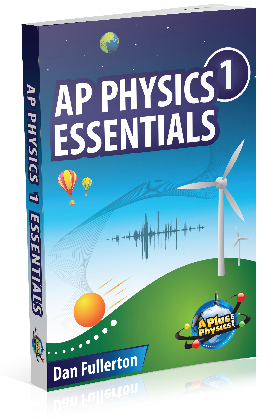Blogs
Our community blogs
-

 Latest Entry
Latest Entry
physics on swimming
Now that summer is practically here and watching my parents open the pool, I decided to do this physics blog on swimming. Swimming relates to physics a lot more than you think. Newtons first, second, and third laws play a huge part in the physics of swimming.
Newtons first law shows the difference between static and dynamic forces and why it takes extra forces to get through two different forces. A static forces is when a body is at rest it stays at rest. The movement you feel once you get your body to move it you overcoming the static force. A dynamic force is when a body in motion wants to stay in motion. Newtons second law gives us the explanation as to why someone can swim faster than others. For example, if someones mass is equal, then it would be all about the amount of force they use to take off. Newtons third law states for every action there is an equal and opposite reaction. When swimming and doing the breast stroke,the water moves down the side of you. The equal reaction would be pushing the water back on you while the opposite reaction would be the reason why you are moving forward.
This proves that physics is everywhere, no matter what you do!
- Read more...
-
- 0 comments
-
 Latest Entry
Latest Entry
iss
watch the ISS cross the sky. Get emails for when, where and for how long! Go to: http://spotthestation.nasa.gov/
-
 Latest Entry
Latest Entry
Faster or Slower
What's better.....being faster or being slower? Obviously faster. Have you ever wondered why some people are faster than others though? Are there trends?
To understand the basics physics of running, you can think of your arms as pendulums. A pendulums velocity depends on the length of the pendulum, not the mass of the bottom. If the pendulum is shorter, the speed of the mass at the bottom is faster. Your mass at the end of the pendulum you can think of as your feet. Then proceed to assume that your legs are the pendulums. In order to shorten the pendulum...you have to bend your knees. Obviously you cannot run well with your knees locked, but you will run faster if your knees are bent.
You can also think of your arms as a second type of pendulum. If you bend your arms at a 90 degree angle and swim them in stride with your legs, you will then proceed to run even faster.
-

- 6
entries - 3
comments - 1540
views
Recent Entries
 Latest Entry
Latest Entry
Guitar physics
A guitar string has a number of frequencies at which it will naturally vibrate. These natural frequencies are known as harmonics. The frequency at which an object vibrates at depends upon the tension of the string, the linear density of the string and the length of the string. Each of these natural frequencies or harmonics is associated with a standing wave pattern. Also, the length of strong required to produce a natural frequency could be predicted by using the wave equation (v= frquency x wavelength).
- 6
-
 Latest Entry
Latest Entry
Diffraction of light in my bedroom
Like some others, I personally cannot sleep unless it is completely dark in my bedroom. However with the placement of my bed in a dark area of my room, I'm surprised to find that I cannot sleep because there is still light shining on my bed. But why is there still light if the window in my bedroom is behind my bed, next to a wall? Shouldn't the light be blocked by the barrier? No! The light from the window still shines on to my bed, despite the wall barrier and placement of the bed and window, because there is a diffraction of the light waves.
Diffraction occurs when light waves move past the edge of the barrier, bending the stream of light to another area. In my case, the light from my window was diffracting out past the wall barrier and around to the area where my bed is placed. The amount of diffraction of a light wave depends on both the wavelength of the wave and the size of the space the wave is traveling around. Because the wavelength of the light is constant and it is moving around a large space in my room, there is little diffraction.
Based on my research on diffraction, there is not much I can do about lessening the light shining onto my bed in my bedroom. Even if I were to make the space that the light waves pass through smaller, diffraction would still occur. However, I did learn what causes diffraction and what effects the amount it gives off. It seems that my only solution is to get some very good, very strong curtains!

-

- 4
entries - 0
comments - 1512
views
Recent Entries
 Latest Entry
Latest Entry
Car Crashes
Car collisions happen everyday all over the world just like how physics is used every single day all over the world. Physics has a big part in accidents involving vehicles due to the force, momentum, acceleration and collision that occurs. The force which cars are brought upon each other depends on how great the acceleration is of the moving vehicle. The faster the car is moving, the greater the force will be as it hits the other car. The amount of force that accidents are caused by are largely dependent on Newton's laws. Objects in motion will stay in motion, therefore when a car is moving towards the other and crashes into it, it's because while the vehicle is moving at a high speed it's hard to come to a complete stop before the collision into the other.
- Read more...
-
- 0 comments
- 4
-

- 0
entries - 0
comments - 1509
views
No blog entries yet
- 0
-
 Latest Entry
Latest Entry
Physics of a roller coaster
Butterflies in your stomach and adrenaline rushing through your veins, roller coasters are an extremely thrilling experience to the riders. While on them, have you ever thought about how they really work and why?
Roller coasters actually operate similarly to catapults and in some cases they actually use catapult launches. These systems operate by very quickly building kinetic energy and exerting it to the train. An example of this system is called the linear-induction motor. This system uses electromagnets to create two magnetic fields that attract. Overall it's a good system because it creates precision, control, speed, and durability.
Of course with such an efficient operating system, the train needs a good way to stop and let the passengers off. To create the maximum break efficiency, the breaks are instead built into the track instead of on the train itself. There are clamps connected to hydraulic systems, so in case of emergency the clamps tense and friction slows down the trains movements.
When actually on the ride, you are part of the energy of the whole system. The ride stores massive amounts of potential energy when ascending up the hills. At the highest point, the train has the most gravitational force possible. After the peak, the train releases the potential energy and becomes kinetic energy.
- Read more...
-
- 0 comments
-
 Latest Entry
Latest Entry
Static Electricity
I enjoyed learning about static electricity. It was interesting to see all of the different ways static electricity is produced and transferred. I also found momentum to be a very interesting subject, seeing how fast a 10 kg box goes down a ramp, very cool!
-

 Latest Entry
Latest Entry
Super Bowl Power Usage
Well the Super Bowl was last weekend and seeing as we are doing Electricity and magnetism now, it got me thinking about how much electricity is used during the super bowl. So I looked around a bit and found out that the TVs used by the people watching the game use 11,309,607 kWh, which is 4.07 * 10^13 J. Now that is enough energy to get a 648919 kg object to escape velocity of 11200 m/s . And that is just the viewers living in the United States so it could be much more. Just think of what all that energy could be used for.
-

 Latest Entry
Latest Entry
Car Crash Web Quest
Gunnar Miller' date=' Nick Nolan, Kaiya Williams[/font']Car Crash Web quest
The car crash web quest included two vehicles a Subaru (200kg) which was at rest and a Cadillac (300kg) which ran into the Subaru. The first objective we tried to solve for was the velocity of both vehicles after the crash. We were given the acceleration of both after the crash which was -3m/s^2 for the Subaru and the Cadillac’s was -2m/s^2. The distance that they went after the collision was also provided Subaru (24m) and the Cadillac (2m). we knew the car cars came to rest after the crash so Vf=0 for both. Once we knew we had three of the five solving for Vi would be simple. We used the formula Vf^2=Vi^2+2ad we plugged in and did two separate equations for both vehicles and the Subaru’s initial velocity was 12m/s and the Cadillac’s initial velocity was 2.83m/s.
Next we were required to find the momentum immediately following the collision with our physics knowledge of the formula Momentum=(mass)(velocity) or P=mv we had both vehicles masses and velocity’s prior to the crash. The way we solved was as follows Cadillac: P= (3000kg)(2.83m/s)=8,490kg*m/s Subaru: P=(2000kg)(12m/s)=24,000kg*m/s. after finding these two momentums it played a huge role in solving the rest of the lab.
The next part was finding the Momentum before the collision this was a very simple step in the lab we knew that before the collision the Subaru was at rest so the momentum of the Subaru was 0kg*m/s knowing the law of conservation of momentum we knew the total momentums of the vehicles after the crash would equal the momentum of the Cadillac before the crash. This lead us to add 24,000kg*m/s+8,490kg*m/s= 32,490kg*m/s.\
Finding the velocity before the crash was similar to the problem before we knew the Subaru’s velocity was 0m/s because it was at rest. To find the Cadillac’s velocity before we derived the formula Vs=(msuv)(vsuv) + (mwagon)(vwagon)/ msuv = 32490kg*m/s /3000kg= 10.83m/s. Knowing the speed limit was 35km/hr so we converted 10.83m/s to 38.99kh/hr so we knew that the Cadillac was speeding before he hit the wagon.
- Read more...
-
- 0 comments
-
 Latest Entry
Latest Entry
Fun in Physics Class
During my first week of physics class i felt completely lost! I wanted to understand physics so badly! I love math; so I was confused as to why I was not understanding physics. We were learning kinematics and I had no idea what was happening. What's velocity? What's acceleration? These were some of the questions I was asking myself. After much practice I finally got the hang of it! Looking back at kinematics it seems so easy! Hopefully with some of the harder material I will feel the same way!
One of my favorite experiments we did in class was watching what happens with an electroscope. An electroscope is a model that demonstrates the movement of electric charge. Check out the video I posted below to learn all about an electroscope!

-
 Latest Entry
Latest Entry
Physics is Confusing (at first)
I felt so lost within my few first weeks in my physics class, but after seeing how my teacher actually shows us how to apply physics and all the math we've learned all these years, it comes so easily now! Physics will definitely help me down the road in college and possibly in my career, and I am very happy I am taking this course. It has opened my eyes to another world that I wouldn't have known existed otherwise.
-
 Latest Entry
Latest Entry
It Gets Easier
Physics is simple once you get the hang of it! At first the concepts are confusing, but practice makes perfect and it becomes much easier. By the time the test rolls around it's much easier. When I look back on my tests I wonder why I ever had trouble with the chapters. I am so glad I can say this now!
-
 Latest Entry
Latest Entry
En Pointe
I'll be honest: I'm not a prima ballerina. I'm terrible at balancing while en pointe. (For those of you who aren't familiar with ballet, "en pointe" means when I'm standing on the tips of my toes while in pointe shoes.) My teacher always tells me, "Put all your weight on your big toe!" And here's why:
To stay balanced en pointe, a dancer's center of gravity must be directly above the contact point with the floor. This is called static balance. The net force is zero while torque is also zero. The net force is zero when the force of gravity equals the force of the dancer pushing off the floor. (It gets painful after an hour, trust me.) The net torque is zero when the net force points through the dancer's center of gravity.
After months of pointe training. I've mastered balancing while standing still. However, I have yet to master balancing while turning. The key to good turning is making sure your rotational axis doesn't wobble. Even if you're spotting, a rotational axis is hard to see. (You can't see it!!) We've learned that in order to stand en pointe, a dancer must maintain static balance. Unfortunately, it's impossible to turn while maintaining static balance. While turning, a dancer must shift her/his center of gravity constantly, which is maintaining dynamic balance. The contact with the floor always stays focused, but the center of gravity must move in a circular pattern, much like a cone shape.
Wish me luck on mastering my turns!!
- Read more...
-
- 0 comments
-
 Latest Entry
Latest Entry
What am I doing here?
Hello! Well, this is it. the first blog post. What do I write, what do I say to make the reader enjoy this blog? To stay, and want to read more? Well, who am I kidding. There's something going on if their on AP PHYSICS and looking at a blog by the author of hotdog. I don't even blame you if you choose to leave right now. But if you do, you'll miss a great story about how I felt in my very first Physics class!
Actually, there's not much of a story. I walked in, sat down, looked at the board, and felt empty. I'm not sure if empty is the right word, maybe lost. The type of lost where you threw away the map, the guide is on his first single tour, and you're in a foreign country with no idea how to speak the language. Does that bring any image or feelings to mind? As I sat, I realized two things that day: (1) that I would either have to learn some time mangement skills, buckle down, and learn some Physics, or (2), learn how to procrastinate like there is no tomorrow (really, I'm doing yesterday's homework today!)
Which skill do you think I chose as I write this at 1:30 in the morning?
-
 Latest Entry
Latest Entry
The Physics of Skyfall
moon77 on 3 16 14 referenced a video on how James Bond defies the laws of physics. This was a very interesting post and made me think about movies in a way that I never had before. It truly reinforces the assertion that physics is in everything. I loved how the user broke down his calculations to show his readers exactly how James Bond defies the laws of physics.
-

- 3
entries - 4
comments - 1387
views
Recent Entries
Latest Entry
Video: Test Trial of Catapult
In this video my group and I were test trying out our catapult at an approximate angle of 45 degrees which we hoped would of increased our distance. Projectile displacement is also present in this video, but also the force of gravity which then brings down the softball.
- 3
-
 Latest Entry
Latest Entry
slingshot
Over the week end me and my youth group made a slingshoot out of some ristbands left over by the youth rally. We tride to shoot a hotdog acrost black creek. We falled and it just below up and made a mess.phiysics apply to this because as we aplide preser on the slingshot it made more potential energy yhat when released it made kinetic energy and pushed the hotdog forword till it fell apart. Im taking physics to understand the ws us of motion so we can make better slingshots.im exited to lurn how the world works in a new way but im anzious that I dont have much time with all the school work this year.
- Read more...
-
- 0 comments
-

 Latest Entry
Latest Entry
physics on roller coasters
Everyone enjoys the thrill of roller coasters, but not everyone takes the time to realize how they relate to physics. Roller coasters relate to physics because of the potential engery and the kinetic energy they use. As well as gravity, and using forces.
A roller coaster uses both potential energy and kinetic energy. It stores the energy as the roller coaster is inclining up the hill because of the gravity that is pulling it down creating a greater distance. As the potential energy is released once it has reached the top of the hill, kinetic energy takes over as it is going up the hill. Roller coasters tend to be converting potential energy and kinetic energy throughout the entire ride. For example, when there is a small hill somewhere on the ride, the train will store potential energy again as it is going up that hill until it goes back down. Gravity tends to do the same thing throughout the entire ride, but in different ways. If the roller coaster were to be moving up the hill, then gravity will be pulling the back of the train so it decelerates. If the roller coaster were to be moving down the hill, then gravity will be pulling the front of the train so it accelerates.
I've learned many things in physics and relating them to things I would of never thought about makes the topics so much more interesting!
- Read more...
-
- 0 comments
-
 Latest Entry
Latest Entry
Kayaking
I go camping on the lake a lot with my family, and one of my favorite things to do is to go kayaking. Kayaking uses Newtons third law, because as I push the water back, the water exerts the same force back onto my paddle, pushing the kayak to move forward in the water.
-
 Latest Entry
Latest Entry
Welcome to the Play; Vectors applied
I recall standing near one of two doors to the auditorium on a Sunday Afternoon, waiting on people to arrive. it was not until 1:45 until people started to swarm in. Ripping up tickets and providing programs, I was busy at work making sure that people would feel welcome inside the dark chamber. The performance itself was based off of a child's book, reimagined, and transformed into the musical known as Frog and Toad. yet all that mattered to me at the time was dealing with ticketwork and getting the viewers in.
Yet at the same time, i wasn't responsible for every single viewer. No, instead some funneled in through the alternative door, while others seated themselves onto the balcony on the second floor. So if i didn't have to manage every ticket, how could i predict where people would enter? That's where physics comes in.
As it is known, Vectors are quantities of both magnitude and direction. Near my door, i could figure which people would check through me through the direction in which they took to reach the auditorium. If they entered through the main entrance and through the commons (presumably eastward), it would have been unlikely that they would have entered through my door, since it was more situated towards an entranceon the left of the building. Should they have entered through that entrance ( which was southward), they would have more likely checked in with me. Another thing i noticed was the magnitude of their movement. I noticed that generally people were more rushed the closer it was to show time; a sign that they moved faster.
In all, by observing this, I was able to take something as absurd as being a volunteer, and use physics to make the job easier. with the assistance of vectors, i could keep myself reminded that not every person would be checking in with me.
-

 Latest Entry
Latest Entry
Catapults
So, recently for physics we were assigned a project of constructing a catapult to help us better understand the concept of projectile motion. This project taught me a lot. On the day of the launch, we got a certain distance that the softball we shot went, we had a certain initial velocity and final velocity and also a certain time it took to go x distance. The acceleration was constant. This helped us relate to what we were learning in class about projectile motion because it was a first hand experience of it.
-
 Latest Entry
Latest Entry
Physics Boarding
So i was chillin with my boi shabba, when we were like yo lets go longboarding. So we grabbed our yatchs and headed to the local chapel hill. Now while pushing we can hit a speed (according to the speed gauges in the road) of about 15 miles per hour. Which is roughly 6.7056 meters per second. Which is relativly fast. Also, courtesy of the speed gauges, that at the end of the hill we hit speed of 33 miles per hour, which is roughly 14.75 meters per second. We were disapointed that we couldnt even hit the speed limit of 35 miles per hour, but whatevs. Using this information and the principle of conservation of energy, we can find out the hieght of chapel hill. So check this out, conservation of energy states that mgh= 1/2mv^2. Sooooooo if we plug in our values for velocity and gravity, mass becomes negligable, and we end up with a hieght of 11.1 meters. Now that seems short because i did not take in account the friction between the wheels and the pavement considering we haven't learned rolling friction. Not to mention the friction within the bearings oin the wheels themselves. So the hills A LOT taller as im sure many of you can attest to. I guess at those speeds Shabba and I best be careful.
The Danskster out.
-

- 0
entries - 0
comments - 1299
views
No blog entries yet
- 0
-
Recently Browsing 0 members
- No registered users viewing this page.




